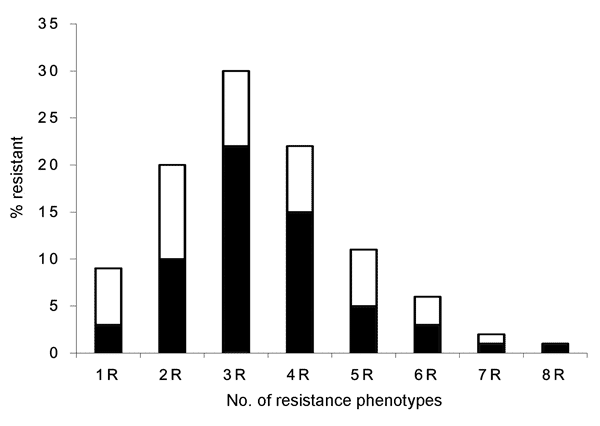Volume 12, Number 6—June 2006
Research
Multidrug-resistant Commensal Escherichia coli in Children, Peru and Bolivia
Figure 3

Figure 3. Frequency of resistance phenotypes in 1,080 randomly selected antimicrobial drug–resistant Escherichia coli isolates from 4 urban areas of Bolivia and Peru. Black bars indicate the most frequent resistance and multidrug-resistance phenotype within each category: 1R, TET; 2R, AMP-SXT; 3R, AMP-TET-SXT; 4R, AMP-TET-SXT-CHL; 5R, AMP-TET-SXT-CHL-KAN; 6R, AMP-TET-SXT-CHL-NAL-CIP; 7R, AMP-TET-SXT-CHL-GEN-NAL-CIP; 8R, AMP-TET-SXT-CHL-KAN-GEN-NAL-CIP. AMP, ampicillin; TET, tetracycline; SXT, trimethoprim-sulfamethoxazole; CHL, chloramphenicol; KAN, kanamycin; GEN, gentamicin; NAL, nalidixic acid; CIP, ciprofloxacin.
Page created: January 04, 2012
Page updated: January 04, 2012
Page reviewed: January 04, 2012
The conclusions, findings, and opinions expressed by authors contributing to this journal do not necessarily reflect the official position of the U.S. Department of Health and Human Services, the Public Health Service, the Centers for Disease Control and Prevention, or the authors' affiliated institutions. Use of trade names is for identification only and does not imply endorsement by any of the groups named above.